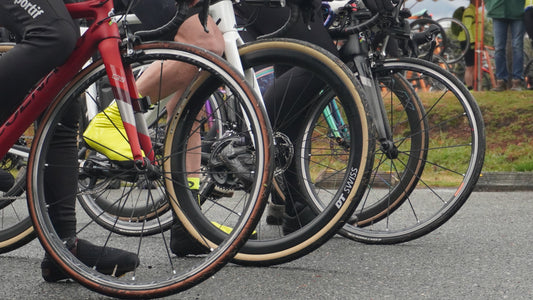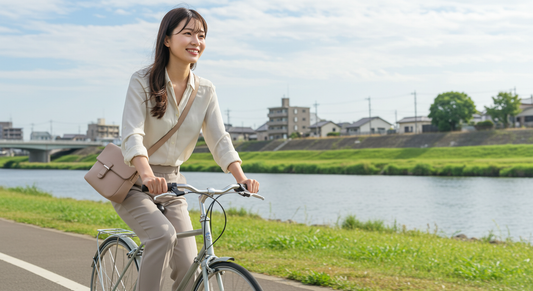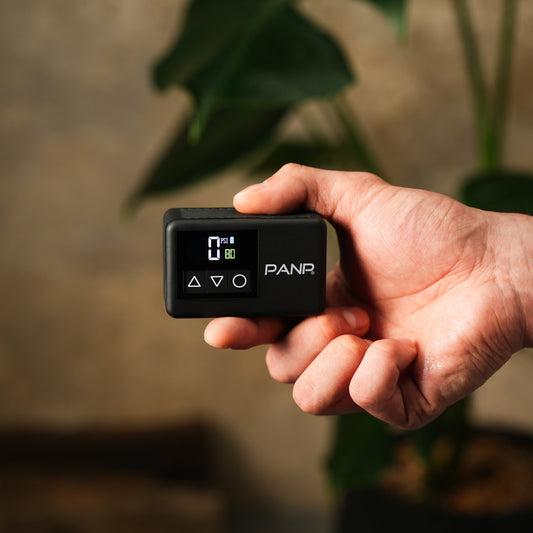- Introduction
- What is an electric air pump?
- The importance of an electric pump on mountain bike trips
- How to choose an electric tire pump
- Recommended electric air pumps
- How to use an electric tire pump
- summary
Introduction

Mountain biking is a great way to enjoy adventure and thrills in nature. However, to make such a trip more comfortable, you need the right equipment. Among these, an electric air pump is considered to be a particularly important item. This is because the air pressure in mountain bike tires can easily change depending on the terrain and weather conditions, and maintaining the correct air pressure is directly related to riding comfort and safety .
Although manual pumps are available, electric pumps allow you to quickly and easily refill your tires while traveling, making them a must-have, especially when riding long distances . Having an electric pump means you can respond quickly at any time and prevent any problems along the way.
What is an electric air pump?
An electric pump is a device that uses electricity to automatically inflate tires, balls, and other inflatable products. Its basic function is to connect it to a battery or power source and supply air to tires, balls, and other inflatable products. Electric pumps often have pressure adjustment functions and an automatic shut-off function, which automatically shuts off when the set pressure is reached, eliminating the risk of overfilling.
The biggest difference between an electric pump and a manual pump is its ease and speed . Manual pumps are often tiring and time-consuming, but an electric pump can be completed with just the push of a button. This convenience is particularly noticeable when riding for long periods of time or if you have multiple tires.
The importance of an electric pump on mountain bike trips

If your tire pressure drops during a mountain bike trip, it can cause unstable riding and increase the risk of a flat tire. Maintaining the correct tire pressure is especially important on mountain trails and gravel roads. Having an electric tire pump can help prevent these problems.
Electric pumps also save time and reduce stress during your trip by making it easy and quick to refill your tires. This is a major advantage, as it allows you to get back to riding quickly without spending extra time on the road. Furthermore, electric pumps are compact and easy to carry , so they won't get in the way when you put them in your travel bag.
How to choose an electric tire pump
When choosing the best electric pump for your mountain bike, there are a few things to consider. First, check what the maximum pressure is. Mountain bike tires require a specific inflation pressure, so it's important to choose a model that can accommodate that.
Next, a compact design is also important. When traveling, you want to keep your luggage as light as possible, so it's a good idea to choose a lightweight model that's easy to carry. Also, check the battery life and charging time so you don't run out of charge while traveling.
Recommended electric air pumps
Here are some recommended electric pumps for mountain bike travelers.
▶PANP RIDE MINI (Air pump specialty store PANP)


The PANP RIDE MINI offers the perfect balance of size and battery capacity for those looking to use it for touring or bike sharing. Its compact size allows it to provide all the air you need on a single charge, ensuring you won't run out of charge while on the go.
To operate, simply specify the air pressure and press the button, and the pump will inflate and stop automatically. There is no need to worry about over-inflating and causing a flat tire.
It charges via the same USB Type-C cable as a smartphone, with a charging time of 2 hours. Even if the battery runs out, a 5-minute charge is enough to power a bicycle tire. The PANP RIDE MINI provides powerful support to make your mountain biking trips more comfortable.
Purchase link : Purchase here
How to use an electric tire pump

Electric pumps are extremely useful not only for mountain biking trips, but also in everyday life. For example, they can be used for tire maintenance at home or for refilling car tires. They are also compatible with inflatable products like balls and swim rings, making them convenient for family outdoor activities. By using an electric pump, you can experience its convenience in a variety of situations.
summary
An electric pump is a must-have item for making your mountain bike trip more comfortable. Maintaining the correct air pressure ensures safety and comfort during your ride. Prevent problems while traveling and enjoy a wonderful trip with an electric pump that allows for quick response.
Related articles
- ▶Electric air pump for a comfortable ride! How to adjust bicycle tire pressure
- ▶Cordless and easy to fill! The appeal of rechargeable electric air pumps
#Electric air pump #Electric air pump for mountain bikes #Travel electric air pump #Electric air pump essentials #Recommended electric air pump for mountain bikes #How to choose the best electric air pump for travel #Review of portable electric air pumps #How to use an electric air pump in everyday life




